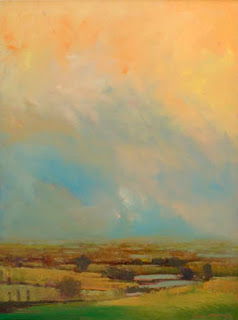Take a look at Chagall's Painting called "I and the Village" again. You will do the first part of the four steps of critiquing, Describe. Take your time and refer to the Elements of Design document as you go through this process.
1. Describe what you see. This is the objective (not subjective or personal)
portion of the Art Critique. Objective information or analysis is fact-based where as subjective information is based
on personal opinions, interpretations, points of view, emotions & judgment.
Objective Information involves a
technical description-nothing more.
It should include things like:
ü Artist's name.
ü Title of work.
ü Type of artwork.
ü Subject of the painting (scene).
ü Objects in the painting.
ü First impression. Note the
characteristics of the artwork that first jump out at you.
ü Colors used.
ü Shapes, lines and texture.
ü Light saturation.
ü Sensory qualities. Identify the
predominant mood and visual effect.












